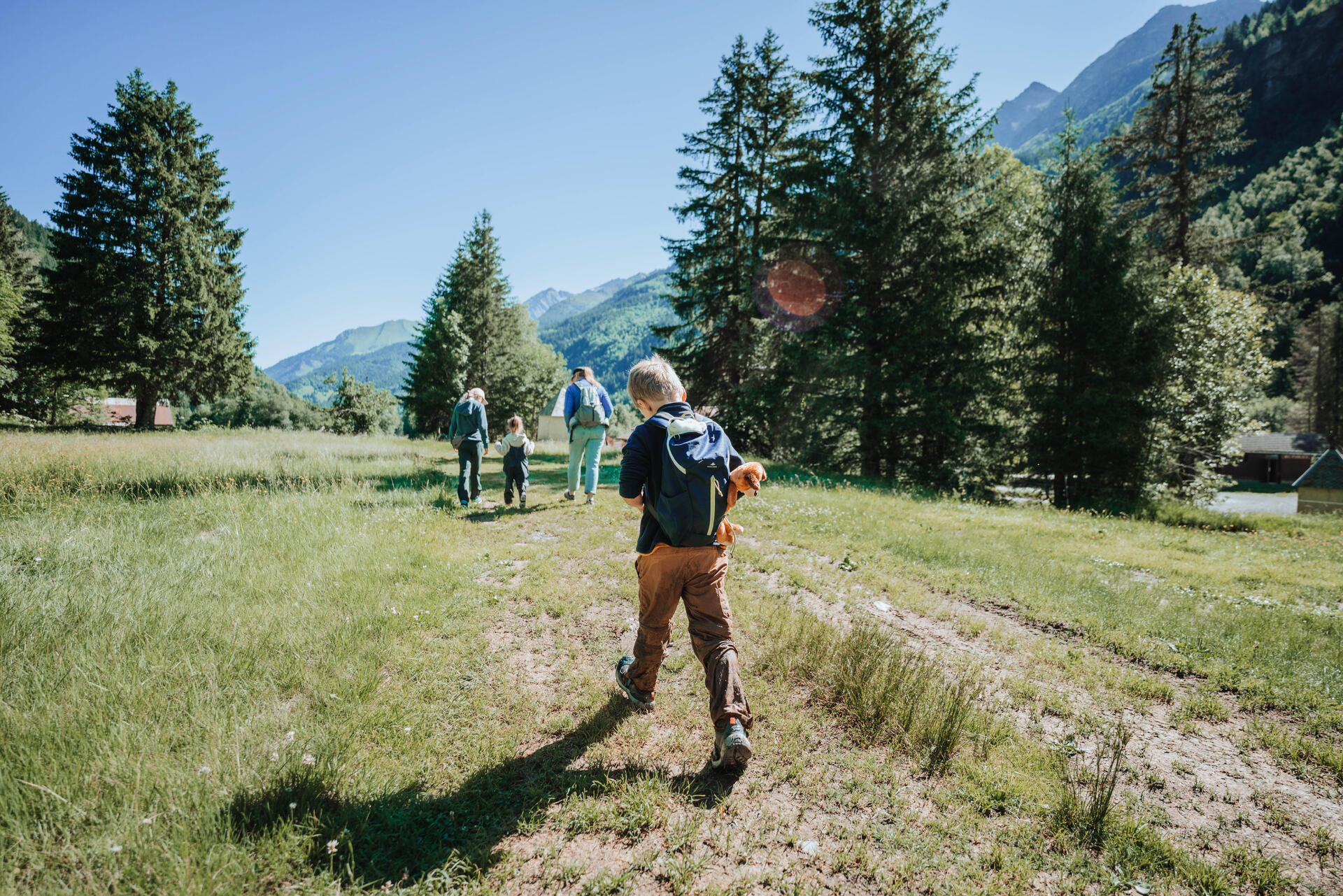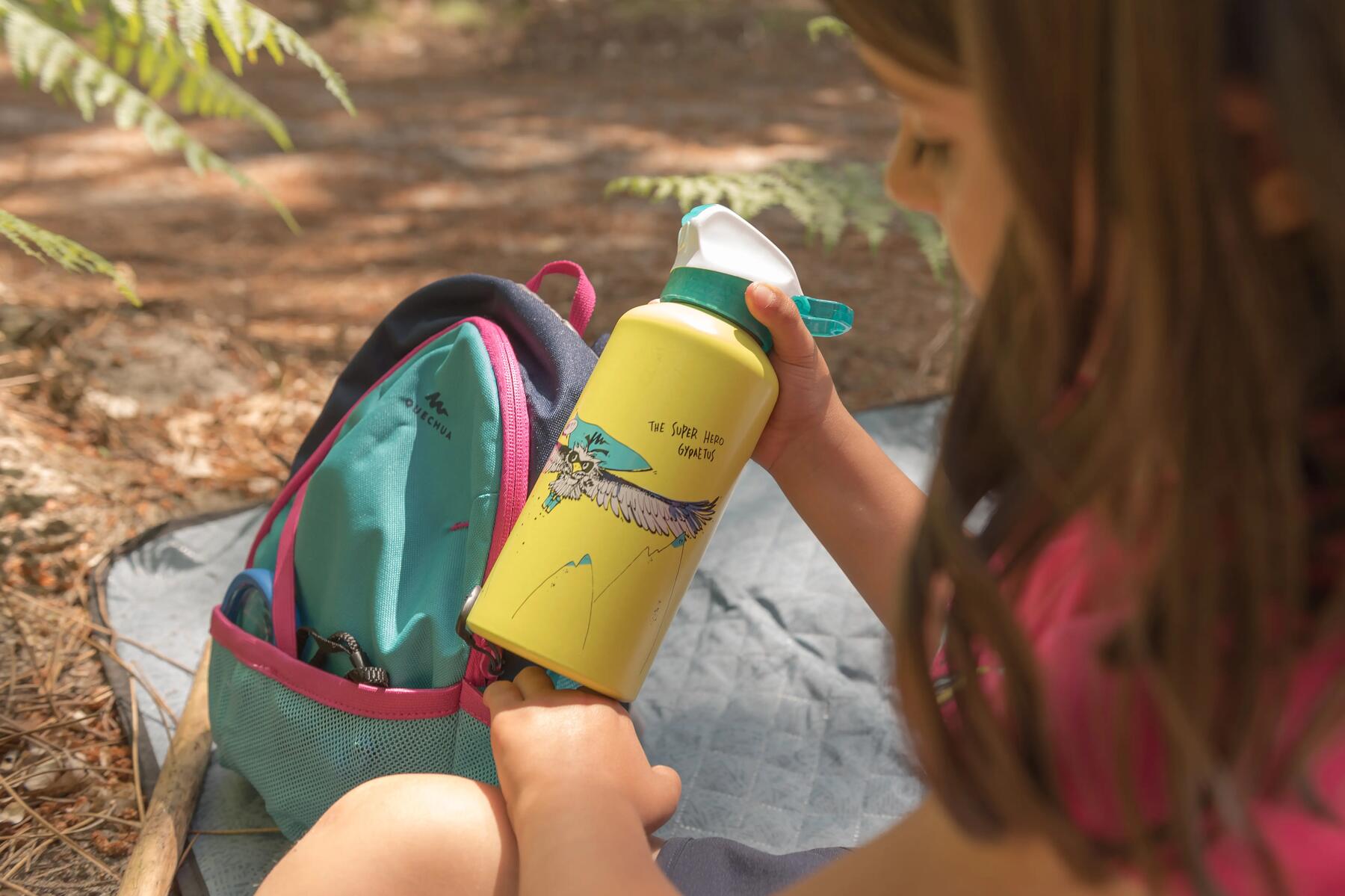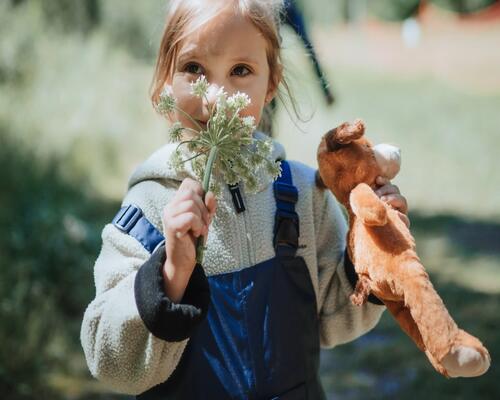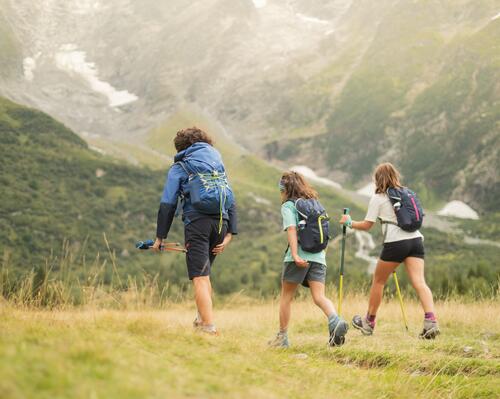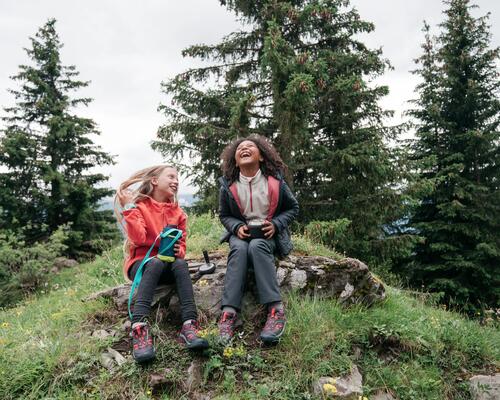3. The three-layer rule for dressing children on hikes
The three-layer system is an effective method to guarantee comfort and protection while out on hikes. By opting for a combination of specific clothing, children remain at ease, even if the weather or the temperature changes during the day. Each layer plays a specific role, and together, they allow you to quickly adapt to variations in climate and physical effort.
The first layer: the breathable T-shirt! The first layer is that directly in contact with the skin. It must be breathable to allow perspiration to be wicked away. A T-shirt made from a technical fabric or Merino wool is ideal, as it keeps the body dry while facilitating the transfer of moisture towards the other layers. Cotton, on the other hand, should be avoided, as it absorbs moisture and remains damp, increasing the risk of catching a chill on a break.
The second layer: a warm fleece. The middle layer, generally a fleece, is an insulating layer. Its role is to maintain body heat, by creating a barrier against the outside cold. It must be light, but sufficiently warm to maintain good body temperature. The fleece is often preferred for its ability to keep you warm even in cases of slight humidity, and for its breathability, which prevents overheating.
The third layer: the waterproof jacket. The last layer is the one that protects against the outside elements: the rain, wind and even snow for winter hikes. A waterproof and windproof jacket prevents moisture from reaching the lower layers, while allowing perspiration to escape. This layer must be relatively light, making it easy to transport, and it’s essential even in fine weather, as the conditions can change quickly in the mountains.
Tip: opt for multi-layered, lightweight layers rather than thick, bulky garments for children on hikes: this allows you to easily adjust warmth according to physical effort. With too much coverage, a child can quickly overheat, especially on climbs.
